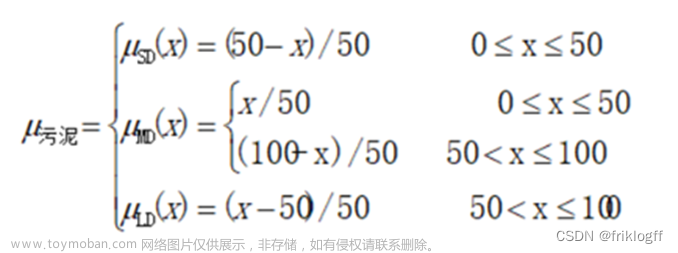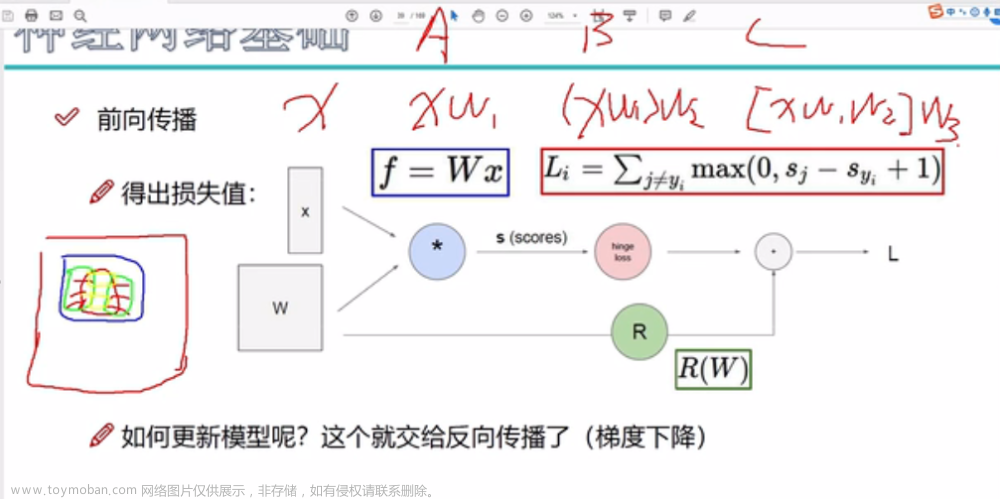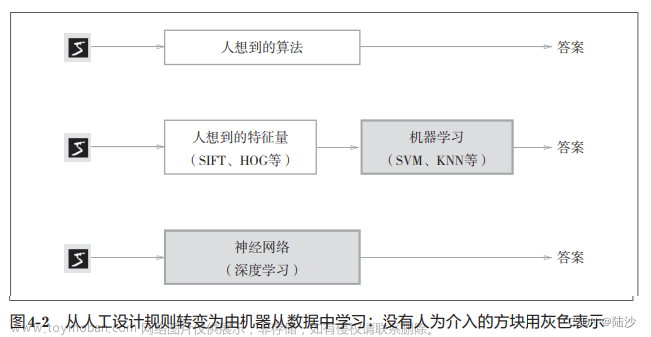detach()
detach是截断反向传播的梯度流
将某个node变成不需要梯度的Varibale。因此当反向传播经过这个node时,梯度就不会从这个node往前面传播。
拼接函数torch.stack()
拼接:将多个维度参数相同的张量连接成一个张量
a=torch.tensor([[1,2,3],[4,5,6]])
b=torch.tensor([[10,20,30],[40,50,60]])
c=torch.tensor([[100,200,300],[400,500,600]])
print(torch.stack([a,b,c],dim=0))
print(torch.stack([a,b,c],dim=1))
print(torch.stack([a,b,c],dim=2))
print(torch.stack([a,b,c],dim=0).size())
print(torch.stack([a,b,c],dim=1).size())
print(torch.stack([a,b,c],dim=2).size())
#输出结果为:
tensor([[[ 1, 2, 3],
[ 4, 5, 6]],
[[ 10, 20, 30],
[ 40, 50, 60]],
[[100, 200, 300],
[400, 500, 600]]])
tensor([[[ 1, 2, 3],
[ 10, 20, 30],
[100, 200, 300]],
[[ 4, 5, 6],
[ 40, 50, 60],
[400, 500, 600]]])
tensor([[[ 1, 10, 100],
[ 2, 20, 200],
[ 3, 30, 300]],
[[ 4, 40, 400],
[ 5, 50, 500],
[ 6, 60, 600]]])
torch.Size([3, 2, 3])
torch.Size([2, 3, 3])
torch.Size([2, 3, 3])
torch.nn.DataParallel()
torch.nn.DataParallel(module, device_ids=None, output_device=None, dim=0)
module即表示你定义的模型,device_ids表示你训练的device,output_device这个参数表示输出结果的device,而这最后一个参数output_device一般情况下是省略不写的,那么默认就是在device_ids[0],也就是第一块卡上。
np.clip()
a = np.arange(10)
np.clip(a, 1, 8)
array([1, 1, 2, 3, 4, 5, 6, 7, 8, 8]) # a被限制在1-8之间
a
array([0, 1, 2, 3, 4, 5, 6, 7, 8, 9]) # 没改变a的原值
np.clip(a, 3, 6, out=a) # 修剪后的数组存入到a中
array([3, 3, 3, 3, 4, 5, 6, 6, 6, 6])
torch.linspace()
函数的作用是,返回一个一维的tensor,这个张量包含了从start到end,分成steps个线段得到的向量。
torch.linspace(start, end, steps=100, out=None, dtype=None, layout=torch.strided, device=None, requires_grad=False)
→ Tensor
例如
import torch
print(torch.linspace(3,10,5))
#tensor([ 3.0000, 4.7500, 6.5000, 8.2500, 10.0000])
type=torch.float
print(torch.linspace(-10,10,steps=6,dtype=type))
#tensor([-10., -6., -2., 2., 6., 10.])
PyTorch中tensor.repeat()
当参数只有两个时,第一个参数表示的是行复制的次数,第二个参数表示列复制的次数;
当参数有三个时,第一个参数表示的是通道复制的次数,第二个参数表示的是行复制的次数,第三个参数表示列复制的次数。
(1). 对于已经存在的维度复制
import torch
a = torch.tensor([[1], [2], [3]]) # 3 * 1
b = a.repeat(3, 2)
print('a\n:', a)
print('shape of a', a.size()) # 原始shape = (3,1)
print('b:\n', b)
print('shape of b', b.size()) # 新的shape = (3*3,1*2),新增加的数据通过复制得到
''' 运行结果 '''
a:
tensor([[1],
[2],
[3]])
shape of a torch.Size([3, 1]) 注: 原始shape = (3,1)
b:
tensor([[1, 1],
[2, 2],
[3, 3],
[1, 1],
[2, 2],
[3, 3],
[1, 1],
[2, 2],
[3, 3]])
shape of b torch.Size([9, 2]) 新的shape = (3*3,1*2)
(2). 对于原始不存在的维度数量拓展
import torch
a = torch.tensor([[1, 2], [3, 4], [5, 6]]) # 3 * 2
b = a.repeat(3, 2, 1) # 在原始tensor的0维前拓展一个维度,并把原始tensor的第1维扩张2倍,都是通过复制来完成的
print('a:\n', a)
print('shape of a', a.size()) # 原始维度为 (3,2)
print('b:\n', b)
print('shape of b', b.size()) # 新的维度为 (3,2*2,2*1)=(3,4,2)
''' 运行结果 '''
a:
tensor([[1, 2],
[3, 4],
[5, 6]])
shape of a torch.Size([3, 2]) 注:原始维度为 (3,2)
b:
tensor([[[1, 2],
[3, 4],
[5, 6],
[1, 2],
[3, 4],
[5, 6]],
[[1, 2],
[3, 4],
[5, 6],
[1, 2],
[3, 4],
[5, 6]],
[[1, 2],
[3, 4],
[5, 6],
[1, 2],
[3, 4],
[5, 6]]])
shape of b torch.Size([3, 6, 2]) 新的维度为 (3,2*2,2*1)=(3,4,2)
pytorch索引查找 index_select
anchor_w = FloatTensor(scaled_anchors).index_select(1, LongTensor([0]))文章来源:https://www.toymoban.com/news/detail-636461.html
先定义了一个tensor,这里用到了linspace和view方法。
第一个参数是索引的对象,第二个参数0表示按行索引,1表示按列进行索引,第三个参数是一个tensor,就是索引的序号,比如b里面tensor[0, 2]表示第0行和第2行,c里面tensor[1, 3]表示第1列和第3列文章来源地址https://www.toymoban.com/news/detail-636461.html
a = torch.linspace(1, 12, steps=12).view(3, 4)
print(a)
b = torch.index_select(a, 0, torch.tensor([0, 2]))
print(b)
print(a.index_select(0, torch.tensor([0, 2])))
c = torch.index_select(a, 1, torch.tensor([1, 3]))
print(c)
-----输出结果-----
tensor([[ 1., 2., 3., 4.],
[ 5., 6., 7., 8.],
[ 9., 10., 11., 12.]])
tensor([[ 1., 2., 3., 4.],
[ 9., 10., 11., 12.]])
tensor([[ 1., 2., 3., 4.],
[ 9., 10., 11., 12.]])
tensor([[ 2., 4.],
[ 6., 8.],
[10., 12.]])
到了这里,关于深度学习torch基础知识的文章就介绍完了。如果您还想了解更多内容,请在右上角搜索TOY模板网以前的文章或继续浏览下面的相关文章,希望大家以后多多支持TOY模板网!











